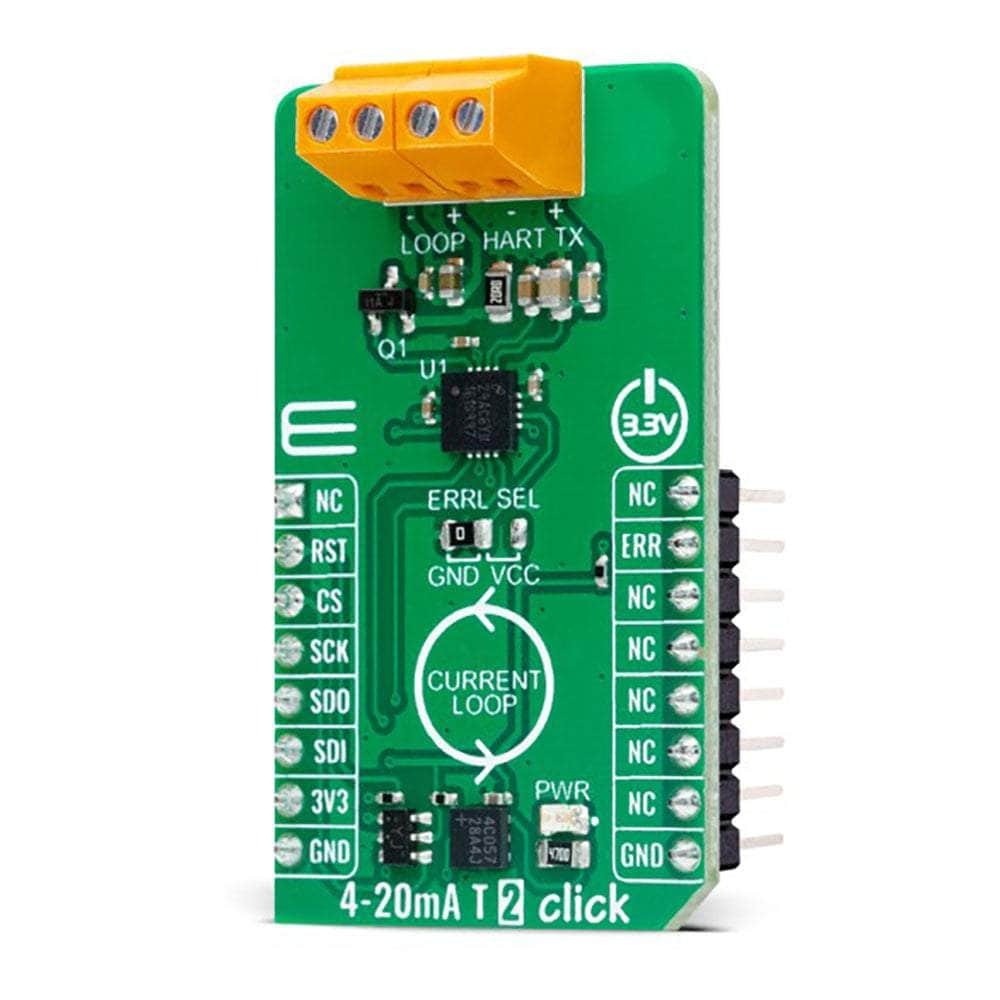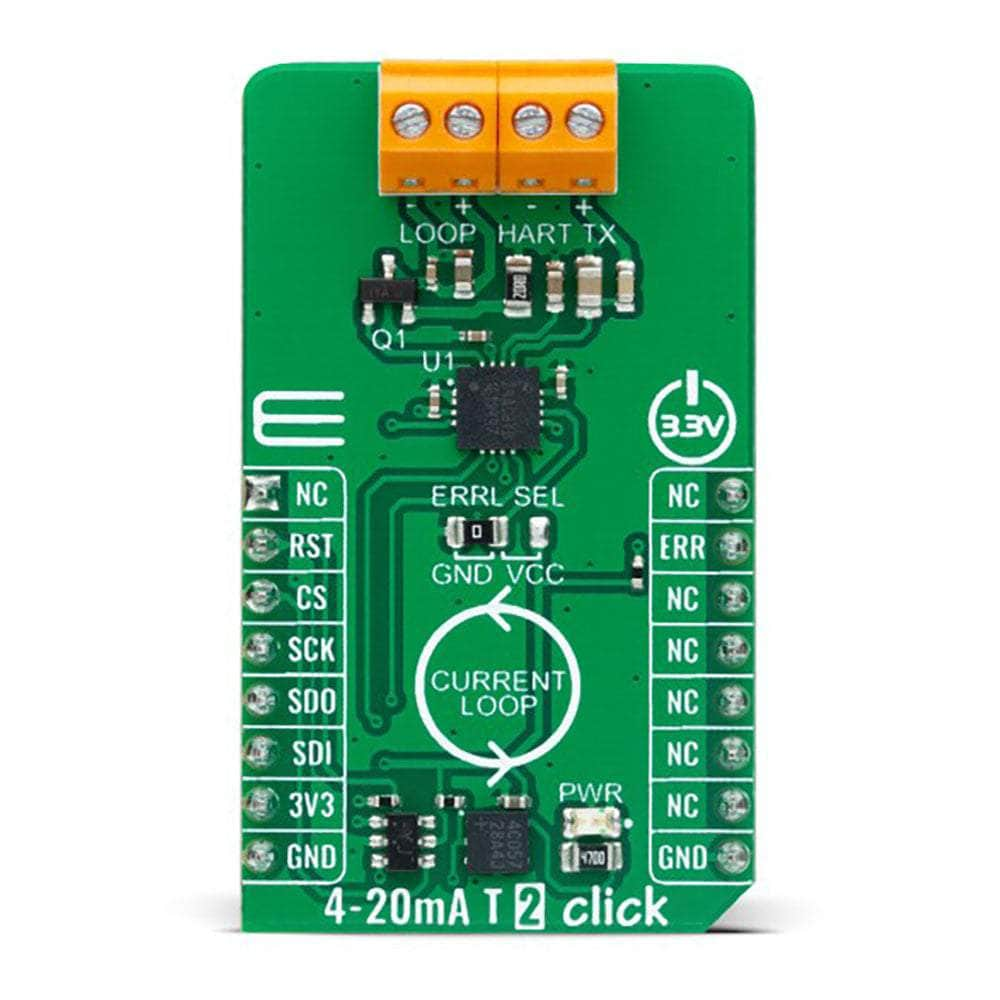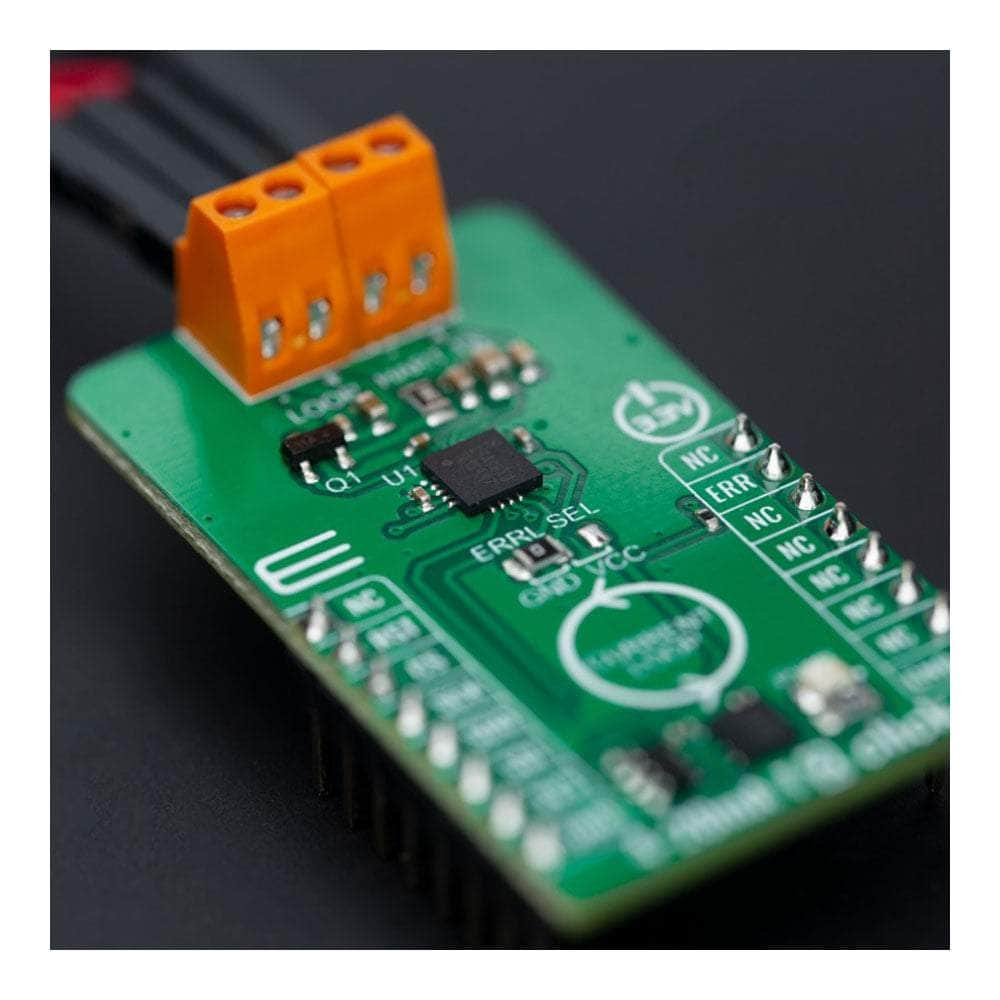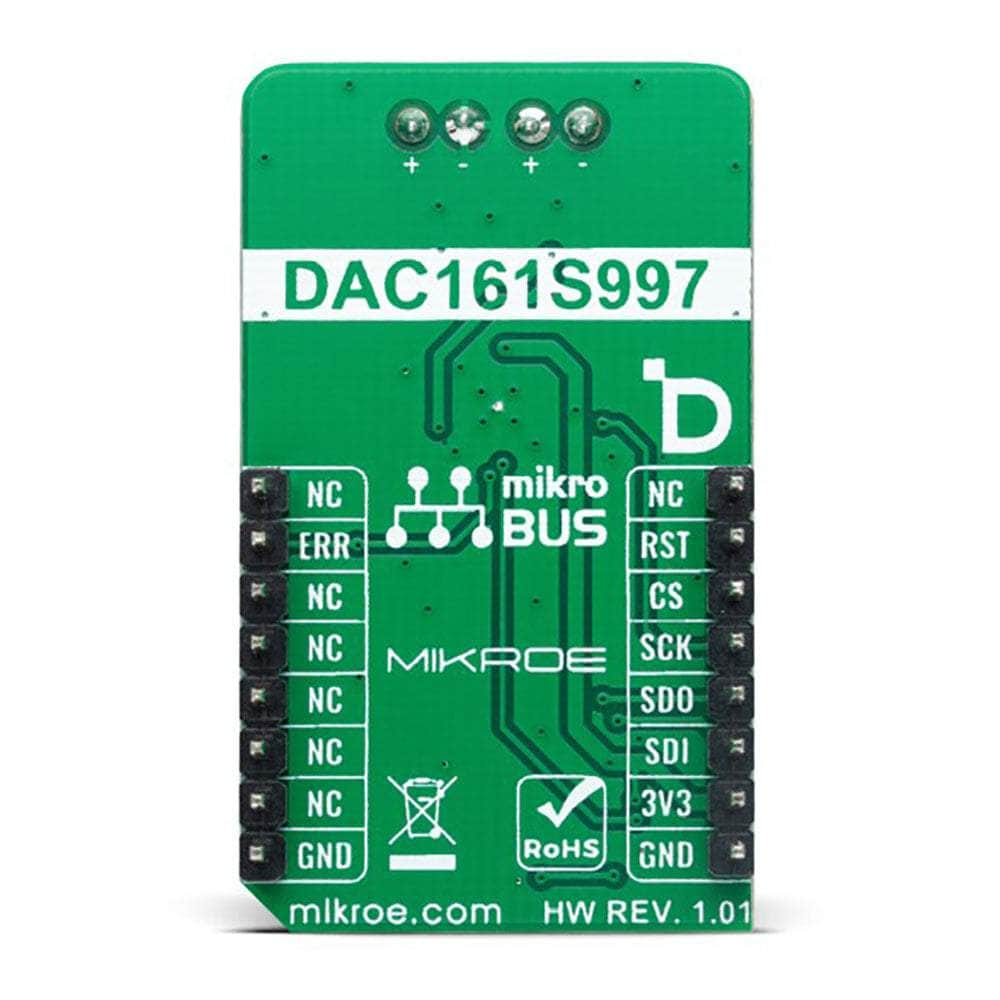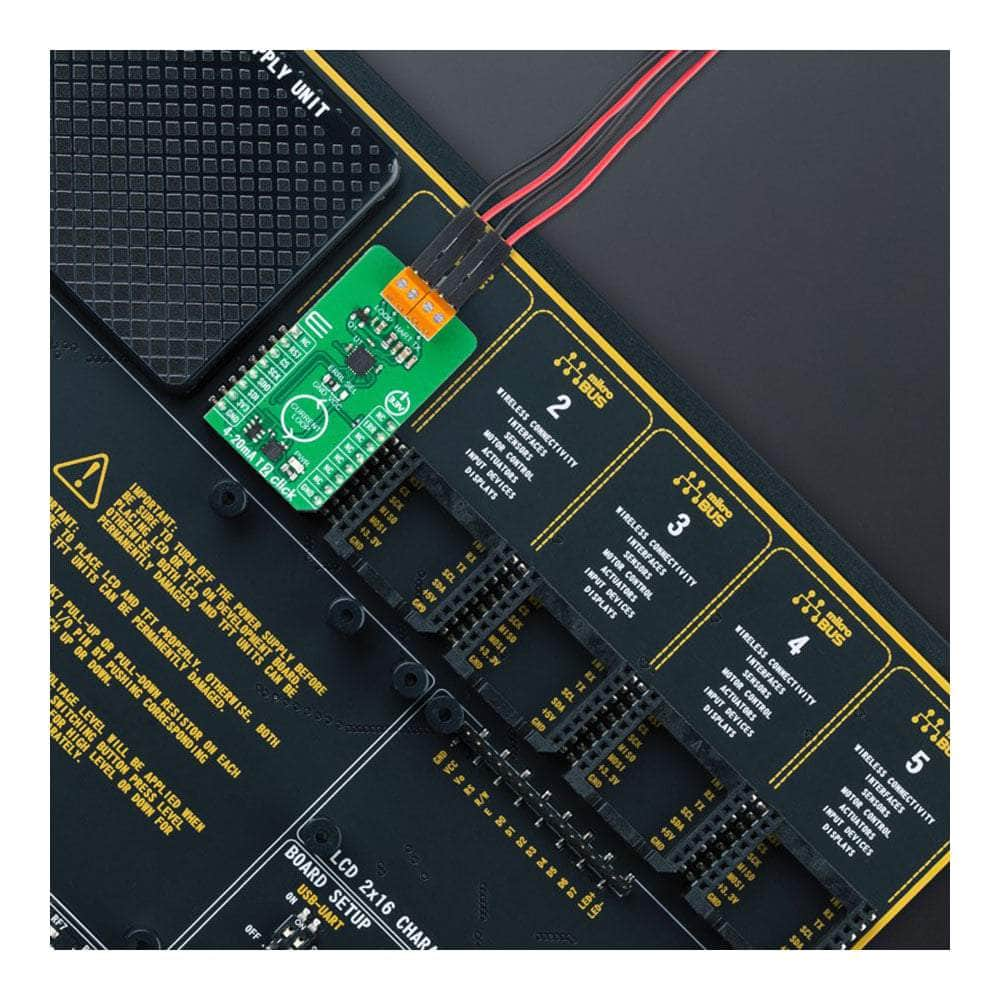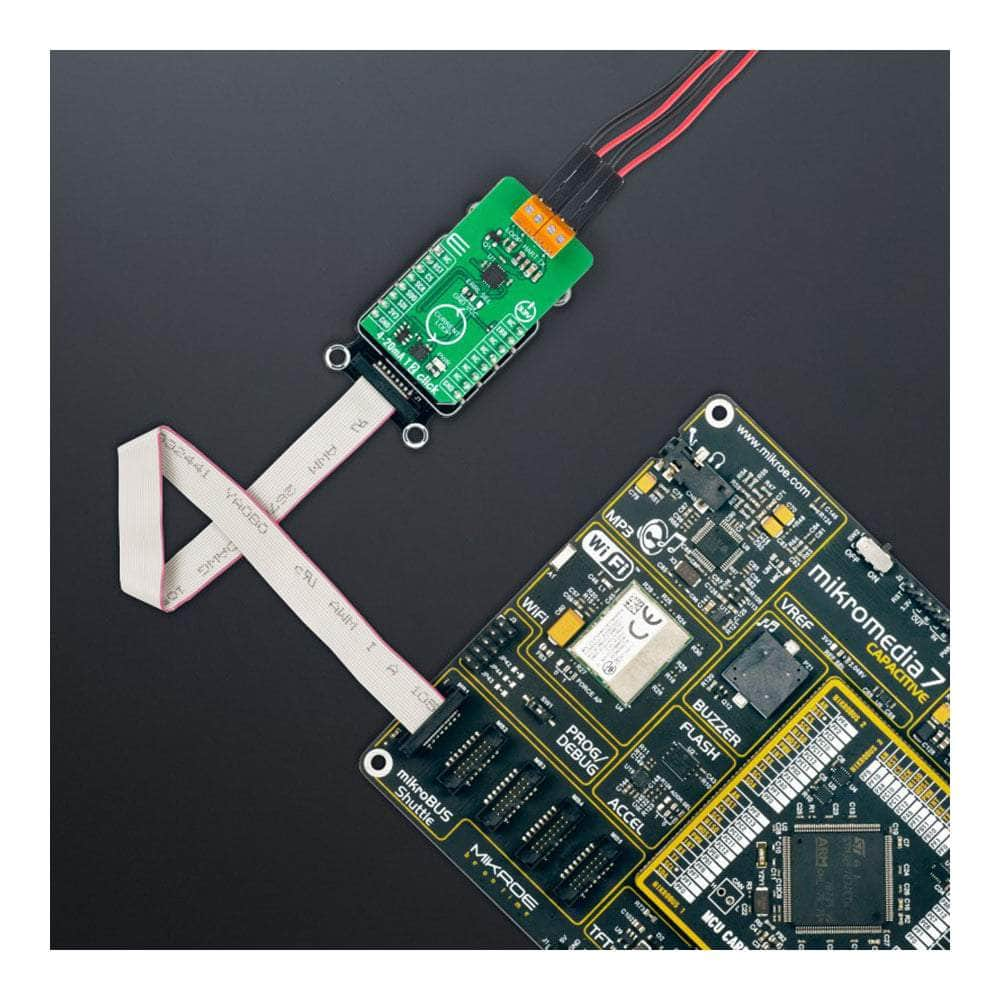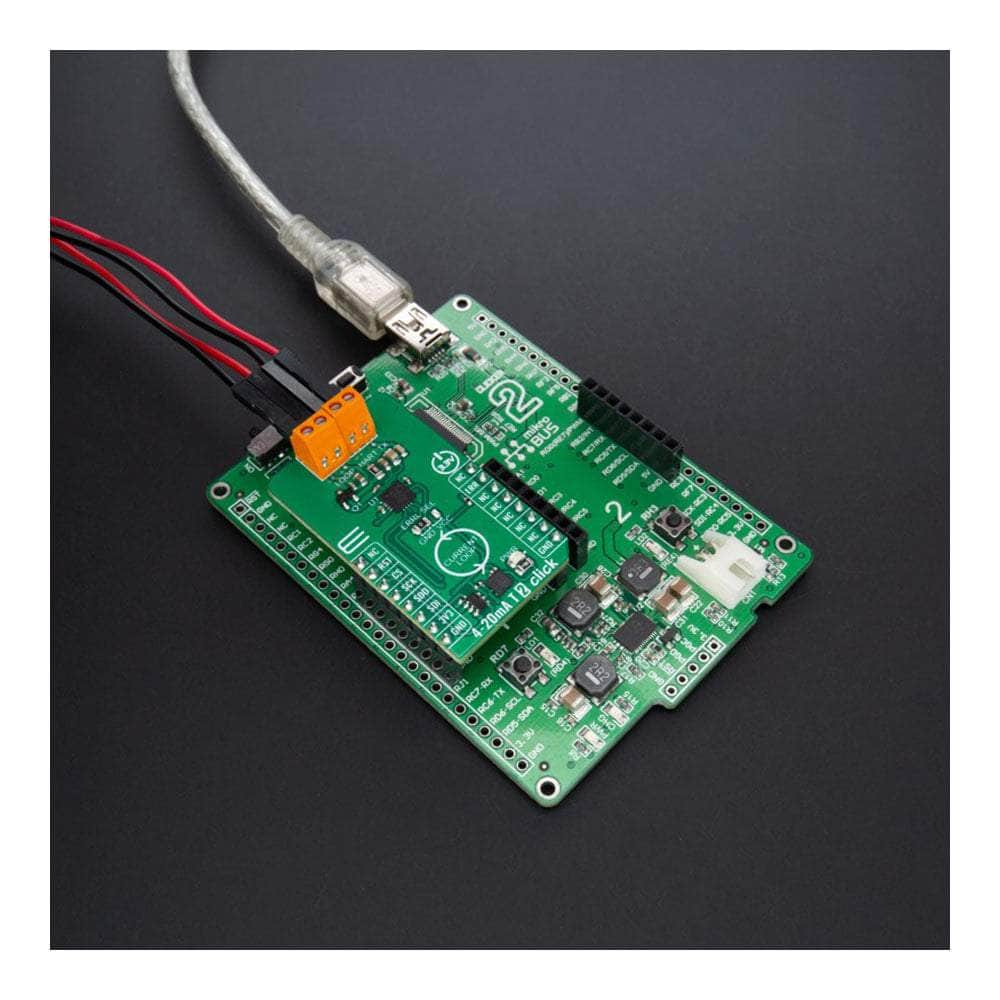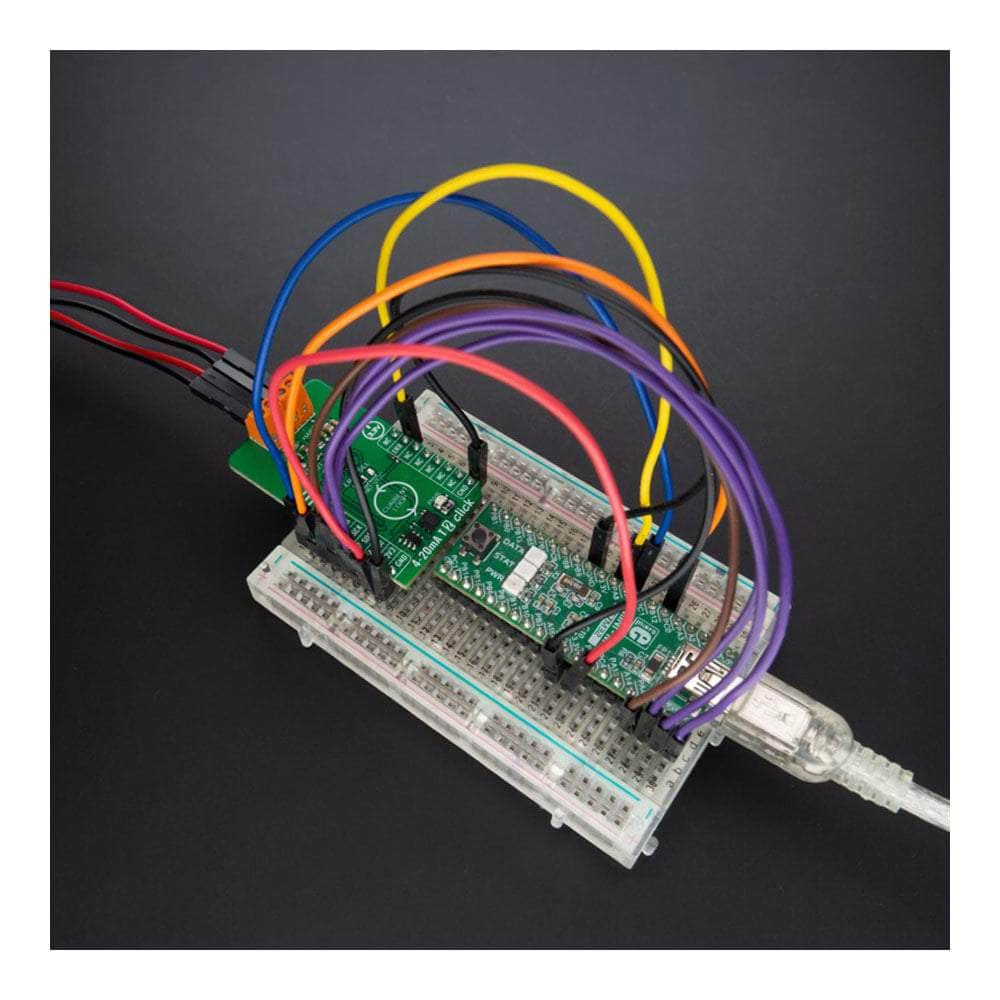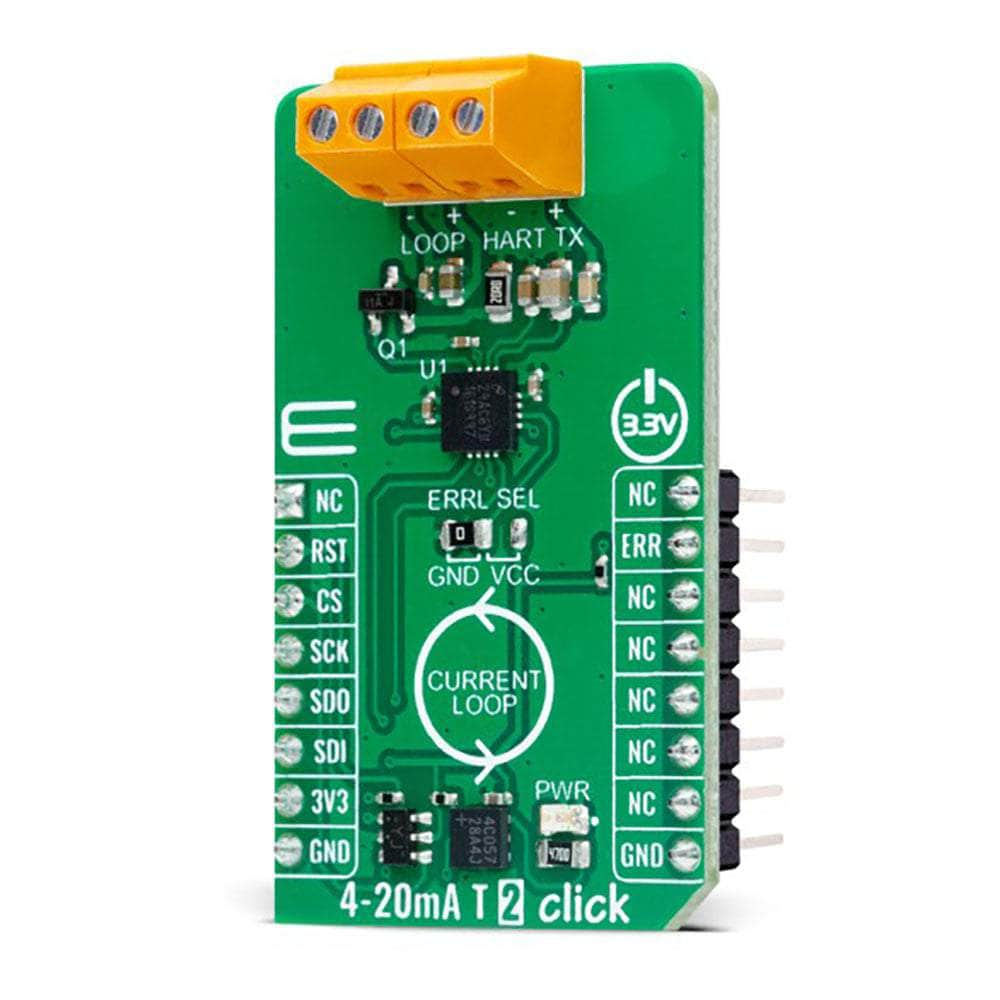
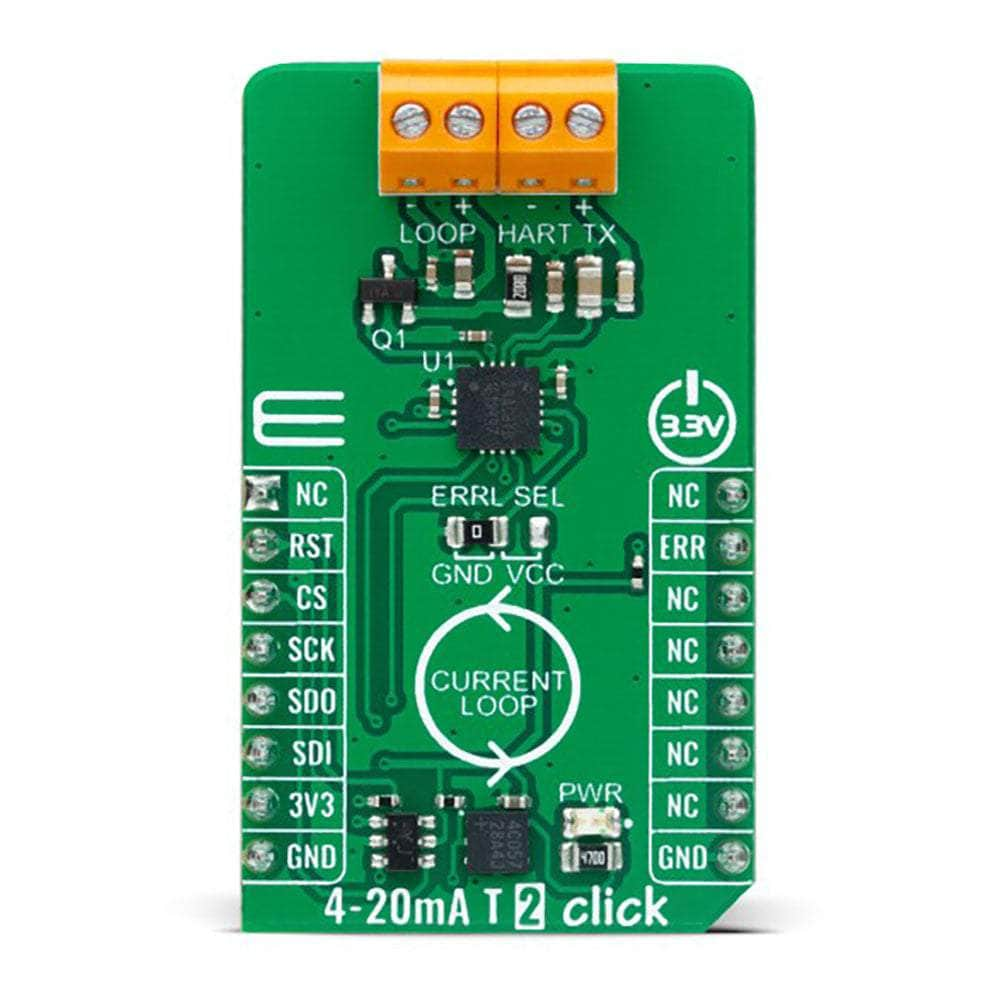
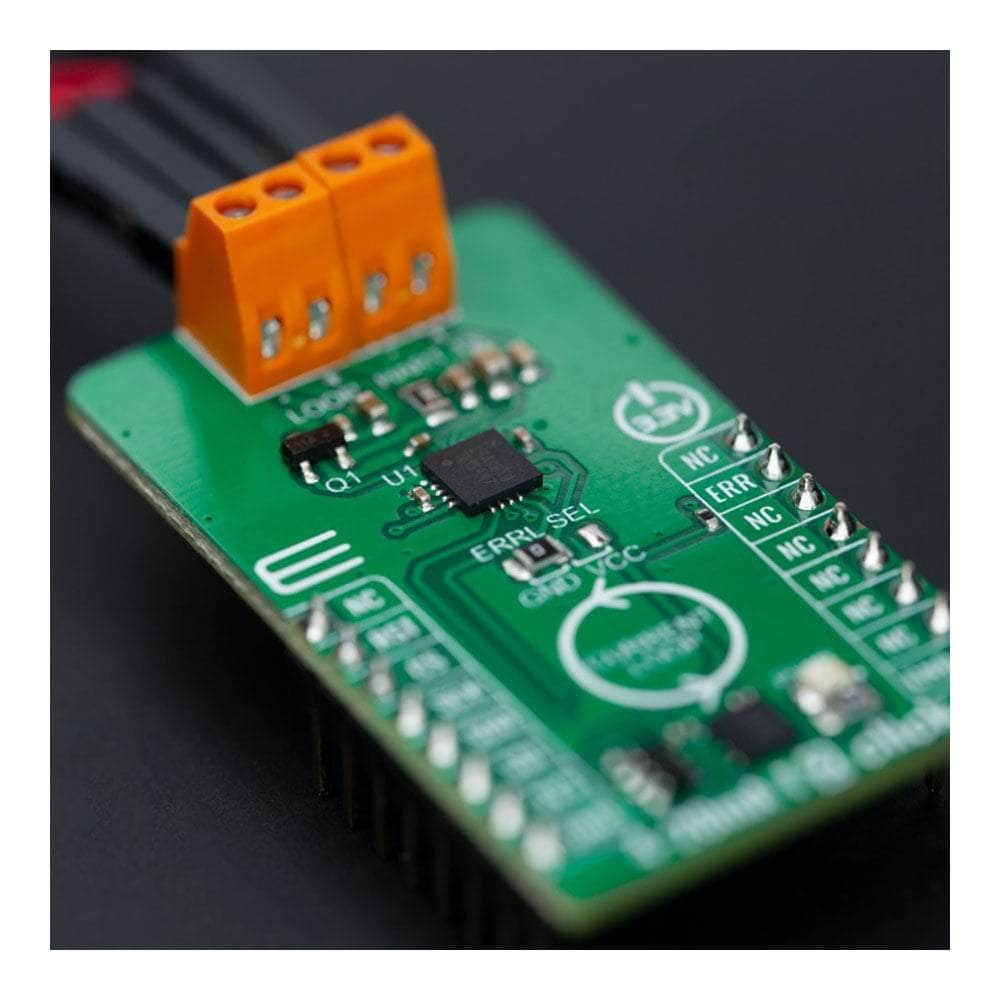
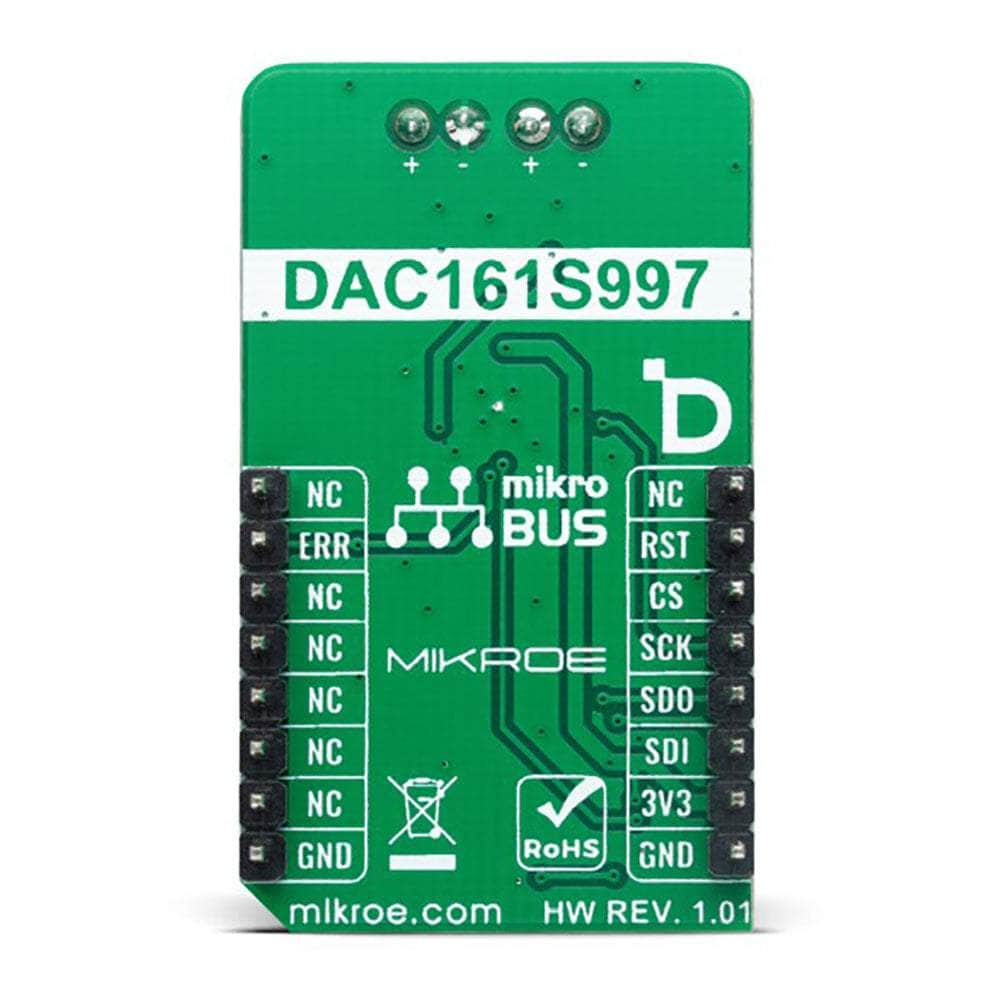
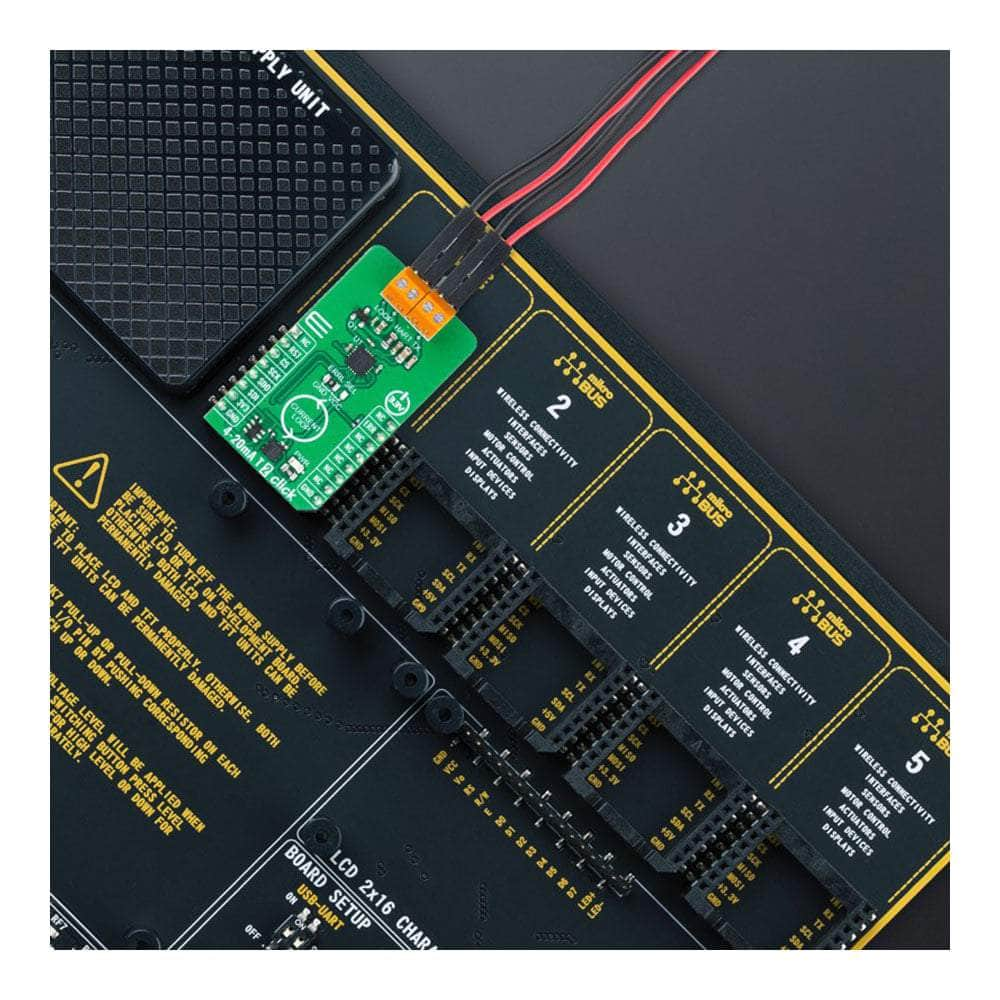
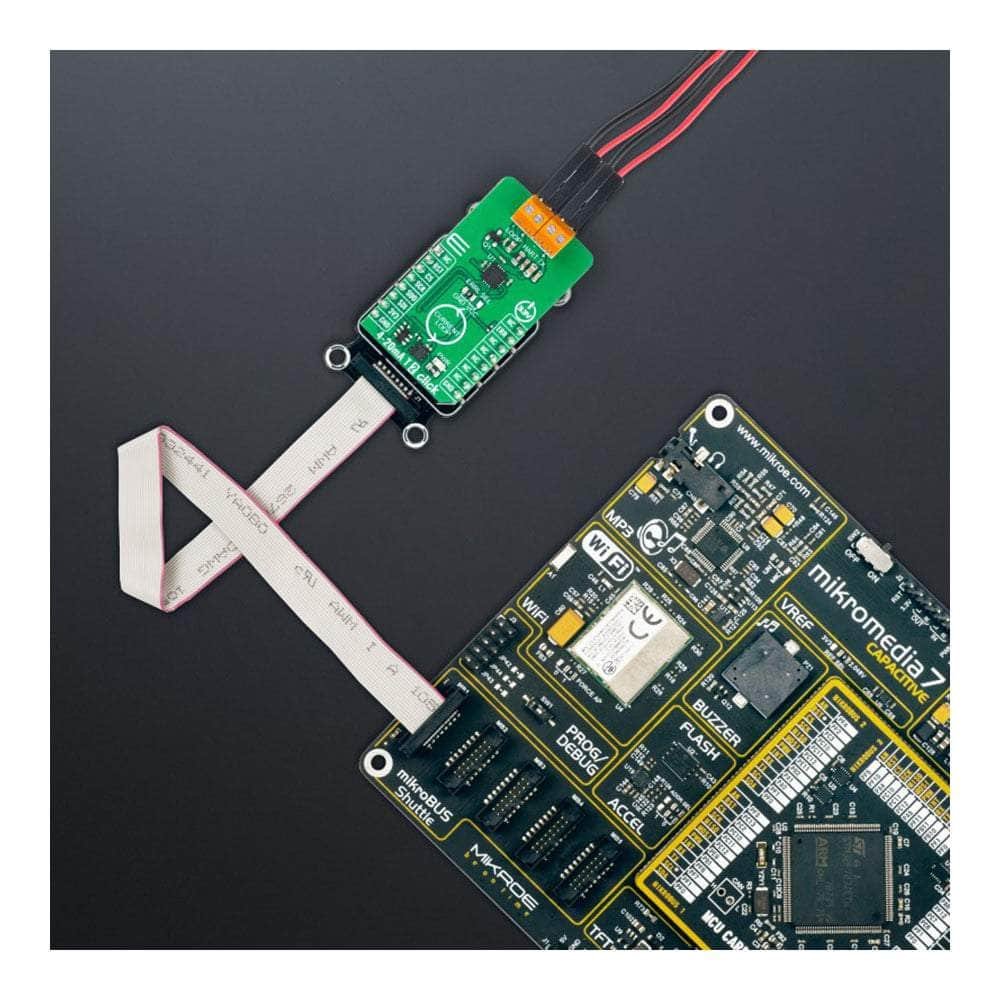
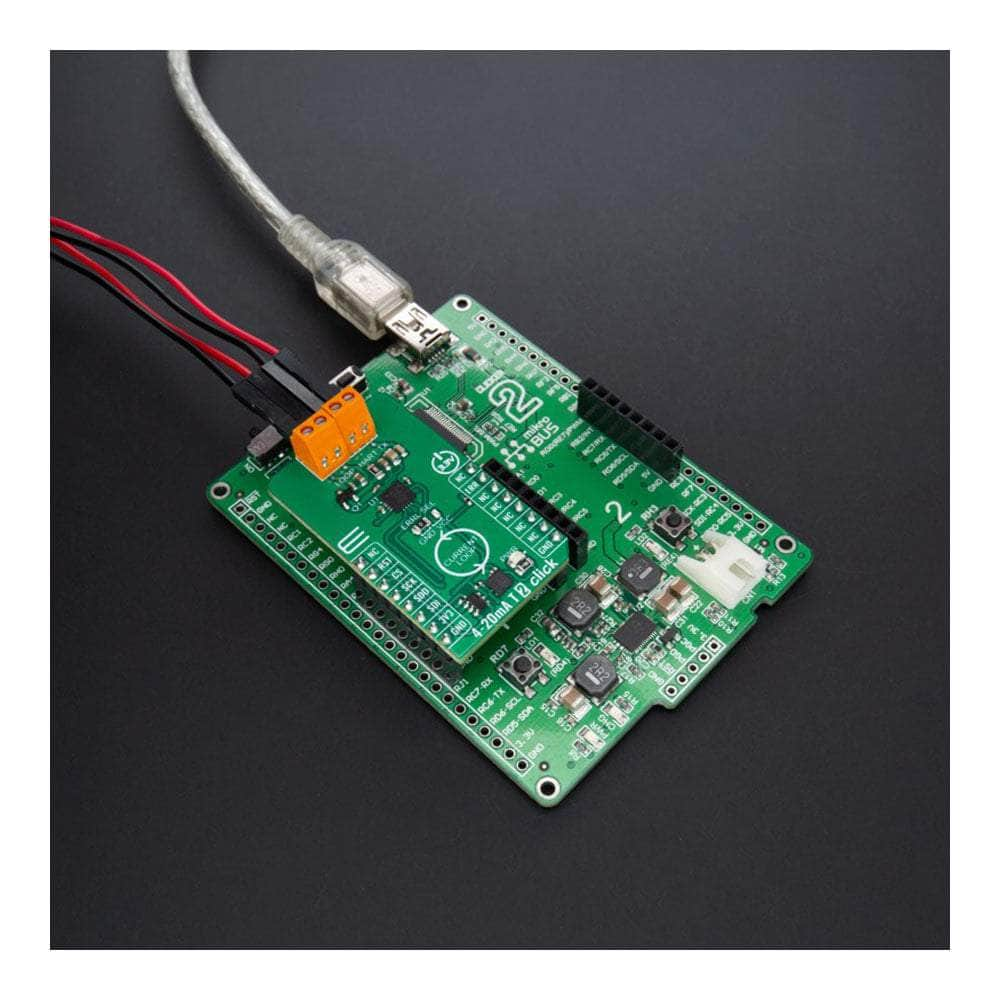
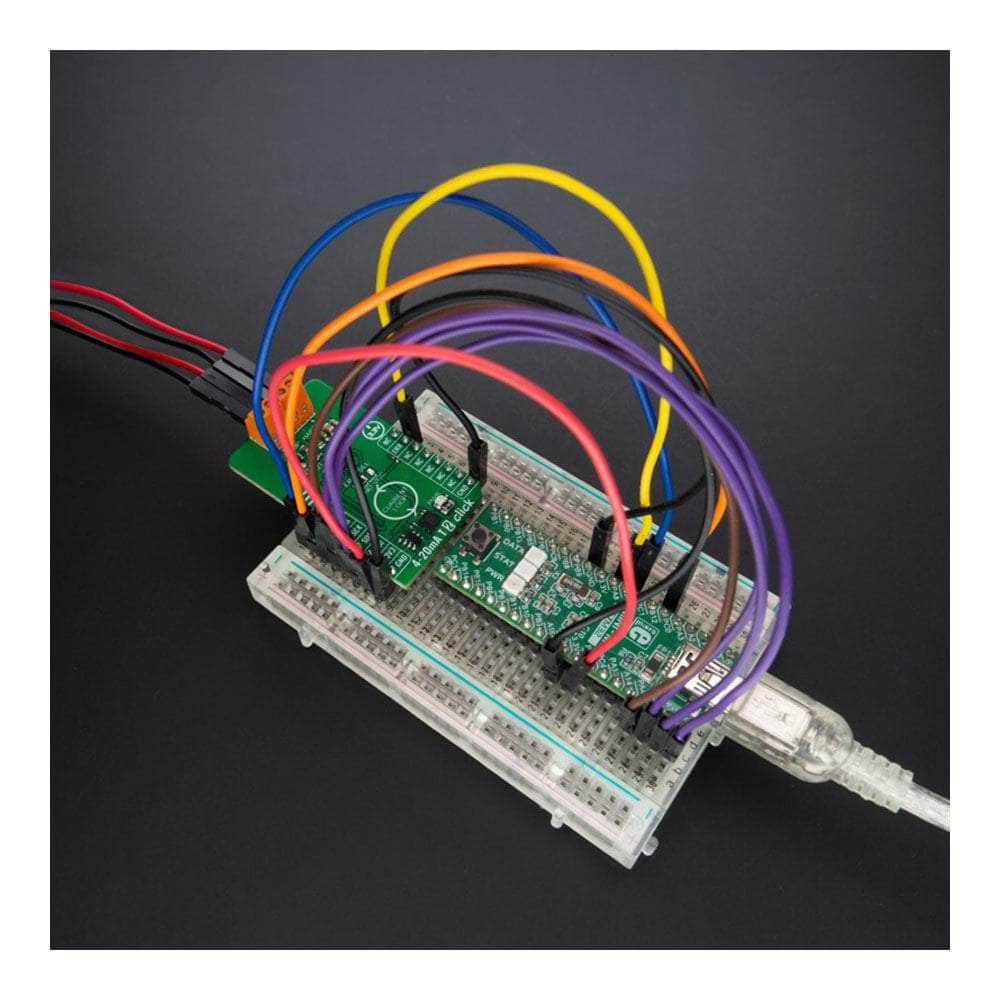
Key Features
Overview
The 4-20mA T 2 Click Board™: Transmitting Analogue Output Current Made Easy!
The 4-20mA T 2 Click Board™ is the ultimate solution for transmitting an analogue output current over an industry-standard 4-20mA current loop. This compact add-on board is designed to streamline your connectivity needs, providing seamless integration and reliable performance.
Powerful Features for Optimal Performance
At the heart of this remarkable Click Board™ is the DAC161S997, a low-power 16-bit ΣΔ digital-to-analogue converter (DAC) manufactured by the industry-leading Texas Instruments. With its advanced features, you can expect nothing short of exceptional performance.
One standout feature is the programmable Power-Up condition, allowing you to customize the behaviour of the Click Board™ upon power restoration. Additionally, the loop-error detection and reporting feature provides valuable insights into the performance of your current loop, ensuring smooth operation at all times.
The 4-20mA T 2 Click Board™ simplifies data transfer, and configuration of the DAC functions through a simple 4-wire SPI interface. This means you can effortlessly fine-tune the settings to suit your requirements, saving you valuable time and effort.
Efficiency and Flexibility Combined
Low power consumption is a key characteristic of the 4-20mA T 2 Click Board™. This ensures energy-efficient operation, prolonging the lifespan of your system and reducing overall power costs. Plus, with its compatibility with the Highway Addressable Remote Transducer (HART) modulator interface, you can seamlessly inject FSK-modulated digital data into the 4-20mA current loop, unlocking a world of possibilities.
Versatile Applications
The 4-20mA T 2 Click Board™ is the perfect choice for various applications. Whether you're working with 2-wire 4-20mA current loop transmitters, industrial process control systems, or low-power transmitters, this Click Board™ has got you covered.
Easy Software Development and Integration
With its mikroSDK-compliant library, the 4-20mA T 2 Click Board™ simplifies software development, allowing you to focus on what matters most - bringing your ideas to life. The library includes a range of functions that streamline the development process, ensuring a smooth and efficient experience.
When you choose the 4-20mA T 2 Click Board™, you choose a fully tested product ready to be seamlessly integrated into your system. Equipped with the reliable mikroBUS™ socket, this Click Board™ guarantees effortless installation and compatibility.
Don't settle for anything less than excellence. Experience the power and convenience of the 4-20mA T 2 Click Board™ today!
Downloads
Das 4-20 mA T 2 Click Board™: Übertragung von analogem Ausgangsstrom leicht gemacht!
Das 4-20 mA T 2 Click Board™ ist die ultimative Lösung für die Übertragung eines analogen Ausgangsstroms über eine 4-20 mA-Stromschleife nach Industriestandard. Diese kompakte Zusatzplatine wurde entwickelt, um Ihre Konnektivitätsanforderungen zu optimieren und bietet nahtlose Integration und zuverlässige Leistung.
Leistungsstarke Funktionen für optimale Leistung
Das Herzstück dieses bemerkenswerten Click Board™ ist der DAC161S997, ein stromsparender 16-Bit-ΣΔ-Digital-Analog-Wandler (DAC) vom branchenführenden Hersteller Texas Instruments. Mit seinen erweiterten Funktionen können Sie nichts weniger als außergewöhnliche Leistung erwarten.
Ein herausragendes Merkmal ist der programmierbare Einschaltzustand, mit dem Sie das Verhalten des Click Board™ bei Wiederherstellung der Stromversorgung anpassen können. Darüber hinaus bietet die Schleifenfehlererkennungs- und -meldefunktion wertvolle Einblicke in die Leistung Ihrer Stromschleife und gewährleistet so jederzeit einen reibungslosen Betrieb.
Das 4-20 mA T 2 Click Board™ vereinfacht die Datenübertragung und Konfiguration der DAC-Funktionen über eine einfache 4-adrige SPI-Schnittstelle. Dies bedeutet, dass Sie die Einstellungen mühelos an Ihre Anforderungen anpassen können und so wertvolle Zeit und Mühe sparen.
Effizienz und Flexibilität vereint
Der niedrige Stromverbrauch ist ein wichtiges Merkmal des 4-20 mA T 2 Click Board™. Dies gewährleistet einen energieeffizienten Betrieb, verlängert die Lebensdauer Ihres Systems und senkt die Gesamtstromkosten. Darüber hinaus können Sie dank der Kompatibilität mit der HART-Modulatorschnittstelle (Highway Addressable Remote Transducer) FSK-modulierte digitale Daten nahtlos in die 4-20 mA-Stromschleife einspeisen und so eine Welt voller Möglichkeiten erschließen.
Vielseitige Einsatzmöglichkeiten
Das 4-20 mA T 2 Click Board™ ist die perfekte Wahl für verschiedene Anwendungen. Egal, ob Sie mit 2-adrigen 4-20 mA-Stromschleifensendern, industriellen Prozesssteuerungssystemen oder Sendern mit geringem Stromverbrauch arbeiten, dieses Click Board™ bietet alles, was Sie brauchen.
Einfache Softwareentwicklung und -integration
Mit seiner mikroSDK-kompatiblen Bibliothek vereinfacht das 4-20mA T 2 Click Board™ die Softwareentwicklung, sodass Sie sich auf das Wesentliche konzentrieren können – Ihre Ideen zum Leben erwecken. Die Bibliothek umfasst eine Reihe von Funktionen, die den Entwicklungsprozess optimieren und ein reibungsloses und effizientes Erlebnis gewährleisten.
Wenn Sie sich für das 4-20 mA T 2 Click Board™ entscheiden, wählen Sie ein vollständig getestetes Produkt, das sich nahtlos in Ihr System integrieren lässt. Ausgestattet mit der zuverlässigen mikroBUS™-Buchse garantiert dieses Click Board™ eine mühelose Installation und Kompatibilität.
Geben Sie sich nicht mit weniger als Spitzenleistung zufrieden. Erleben Sie noch heute die Leistung und den Komfort des 4-20 mA T 2 Click Board™!
| General Information | |
|---|---|
Part Number (SKU) |
MIKROE-5540
|
Manufacturer |
|
| Physical and Mechanical | |
Weight |
0.02 kg
|
| Other | |
Country of Origin |
|
HS Code Customs Tariff code
|
|
EAN |
8606027385643
|
Warranty |
|
Frequently Asked Questions
Have a Question?
Be the first to ask a question about this.

